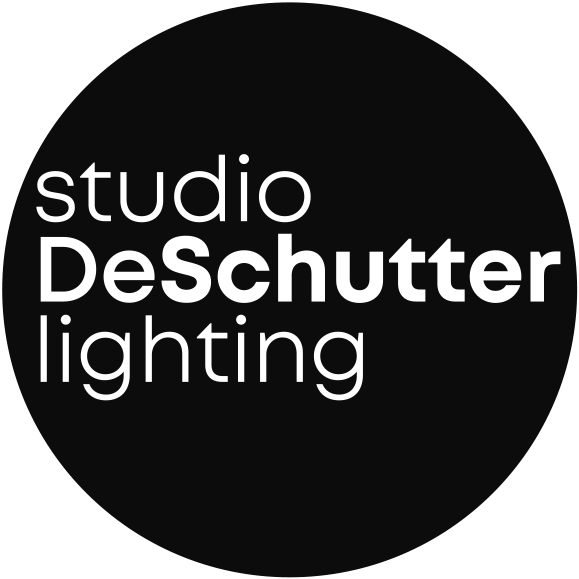General Practice Lighting that Builds Trust and Supports Orientation
A general practitioner’s office is a space filled with expectations. People arrive with worries, questions, symptoms, or simply for routine check-ups. Every visit begins long before speaking with the medical team, it begins with the perception of the space. And in that moment, lighting shapes mood, trust, and emotional comfort.
Lighting in a GP practice is far more than functional brightness. It creates atmosphere, supports workflows, reduces stress, and helps patients feel safe and welcomed. Good lighting makes a space appear clear but not cold, professional yet still human.
Lighting for Fast Food that Turns Speed into Experience
Fast food spaces operate in a rhythm of constant movement. People arrive, decide, order, move on. This makes lighting more than a technical necessity, it becomes a tool that shapes clarity, appetite appeal, and brand identity. Good lighting for fast food spaces structures the flow, enhances the perception of freshness, and supports operational efficiency. Lighting is the invisible system that enables speed without sacrificing atmosphere.
Bar Lighting that Shapes Atmosphere
Bars thrive on mood. On the moment a door opens and a room decides whether it whispers, glows, or pulses. Bar lighting is far more than a technical component. It shapes identity, guides perception, and gives guests the feeling of being exactly where they should be, for one drink or for the entire night. A bar is both stage and living room. A place for conversations in half-light, for encounters, for the small dramas of everyday life. Light defines every zone, every transition, every rhythm. This is where lighting design begins.
Lighting in Cafés and Bistros: Identity in One Flow
Cafés und Bistros sind mehr als Orte für Kaffee und kurze Pausen. Sie sind Treffpunkte, Rückzugsräume, Miniwohnzimmer, Arbeitsplätze und kleine Bühnen des Alltags. Menschen kommen hier an, um zu bleiben, manchmal zehn Minuten, manchmal drei Stunden. Licht entscheidet darüber, ob dieser Aufenthalt ankommt.
Lighting in Fine Dining Restaurants: Sensuality, Atmosphere and Identity in a Single Lighting Concept
Fine dining never starts on the plate. It starts in the room. The moment guests enter, lighting defines expectation curiosity calmness or excitement. It is the first chapter of the evening and the last sensation people take home. Fine dining requires lighting that does not simply illuminate but tells stories. Lighting that shapes space opens emotion and elevates the craft of the kitchen.
Lighting in Dermatology - Precision Atmosphere and Safety in One System
Dermatology spaces respond sensitively to every lighting decision. This is where nuance matters. Tiny changes in skin structure or tone become visible only when lighting is honest consistent and balanced. At the same time people often enter these rooms with uncertainty. Lighting should therefore not only reveal but also reassure. Dermatological lighting always moves between technical precision and human comfort.
Lighting design for medical practices – Light that Builds Trust
In no environment is light as closely tied to emotion as in a medical practice. It welcomes, guides, and calms, often deciding within seconds whether people feel safe and cared for. Here, light is not just illumination; it’s communication. It bridges function and feeling, precision and empathy.
Restaurant Lighting – Creating Atmosphere with Light
Light is the invisible spice of a space. It decides whether we stay or leave, whether a place feels familiar or foreign, whether a dish looks tempting or simply sits on a plate. In restaurants, light is not a technical factor, it’s an emotional one. It writes part of the story of the evening, shapes the mood, and creates what guests later remember as “atmosphere.”
At Studio De Schutter, we see light as a dialogue between space and people. A good lighting concept must feel, not just function. It creates connection, between people, between architecture, between moments.
Dental Clinic Lighting: Balancing Atmosphere, Trust and Precision
Light in a dental clinic does more than illuminate – it defines how people feel, how safely they move, and how precisely they can work.
Thoughtful lighting creates trust, supports focus, and shapes identity.
As lighting designers in Berlin, we create solutions that meet medical requirements while communicating calm and professionalism.
Workplace Lighting: Why Integration Matters from the Very First Sketch 💡
Workplace lighting shapes how we see, feel and perform. Yet in practice, it’s often added too late, treated as a finishing touch rather than a design foundation. At Studio De Schutter, we believe that light should be part of the very first architectural conversation. Materiality, geometry and façade concepts should inform how light defines perception and atmosphere.
Lux at the Workplace: What Do You Really Need in Practice?
The question of proper lighting accompanies almost every office, workshop, and laboratory. Time and again, the term lux at the workplace appears. Official reference values can be useful, but in real life, the gap between theory and practice becomes clear very quickly.
How Many Lux at the Workplace?
As lighting designers based in Berlin and Antwerp, we experience every day that the question of the right illuminance cannot be answered with a simple number. What truly matters is the interplay of function, atmosphere, and sustainability, only then do workplaces emerge that promote both efficiency and wellbeing. The question “how many lux at the workplace?” may sound simple, but the answer is far more complex than the often-quoted 500 lux. People don’t see in lux. What we actually see is reflected light. Lighting is not just about brightness, but about the task, the environment, the materials, and the colors, in short, about perception.
From Good to Great Light: What 5-Star-Plus Lighting Really Means
There are spaces that work. And there are spaces that move you. The difference rarely lies in furniture or colors alone – it lies in light. Good lighting fulfills function. Great lighting creates atmosphere, guides perception, and makes architecture tangible. As lighting designers in Berlin and Antwerp, we show how light goes beyond function and becomes a defining part of spatial identity.














